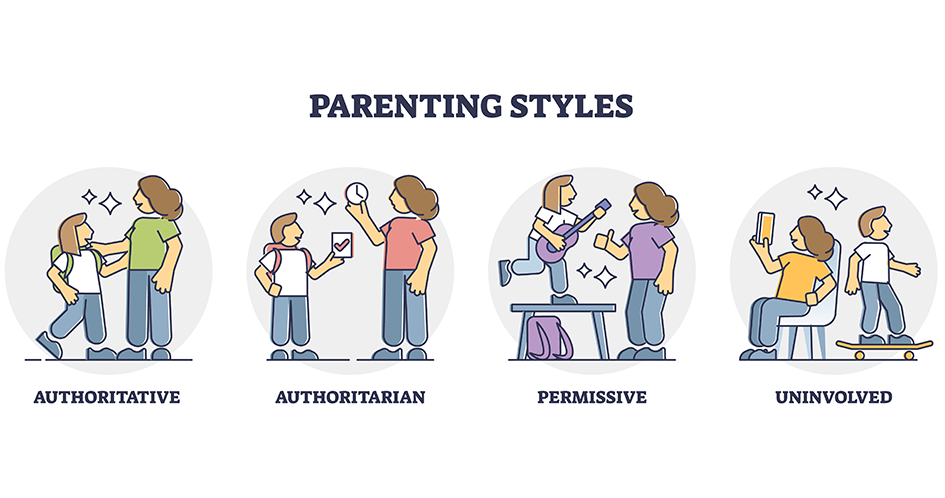Positive Parenting Essentials: Raising children comes with a series of challenges that often require patience, resilience, and a balanced approach. Parents frequently wonder how to discipline their kids effectively, manage tantrums, foster self-esteem, and establish boundaries without falling into power struggles. This article covers five key parenting aspects — discipline without drama, managing tantrums, building self-esteem, understanding parenting styles, and setting boundaries — all designed to create a supportive and respectful home environment.
Table of Contents
Discipline Without Drama
Discipline is necessary for teaching children right from wrong, but it doesn’t have to come with frustration or tears. “Discipline without drama” focuses on managing behavior in a calm, constructive way that encourages learning rather than punishment.
Strategies for Drama-Free Discipline

- Stay Calm: Children often mirror our emotions. If we remain calm, they’re more likely to do the same. Practice taking a deep breath before responding to difficult behaviors, and consider the long-term effects of your response.
- Empathize First: Recognize your child’s feelings before jumping into corrective action.
- Set Clear Expectations: Be clear and consistent with rules. When children know what’s expected, they’re less likely to act out. For example, let them know that screen time ends at a specific time, and stick to it.
- Focus on Teaching, Not Punishing: Redirect undesirable behavior by explaining the consequence rather than reacting emotionally. Rather than saying, “Don’t hit your brother!
Natural Consequences
Allowing natural consequences can be a powerful tool. For example, if your child refuses to wear a jacket on a chilly day, they’ll feel the cold and learn why it’s important without much interference from you.
Parenting Essentials to Manage Tantrums
Tantrums are a natural part of child development, especially in young children. While they can be challenging to handle, it’s essential to understand that tantrums are often your child’s way of communicating frustration, sadness, or fear.
Causes of Tantrums
- Overwhelm: Children feel overwhelmed by too many options, loud noises, or unfamiliar situations.
- Hunger or Tiredness: Basic needs like food and sleep play a significant role in behavior. A hungry or tired child is far more likely to become frustrated.
- Desire for Independence: Young children, especially toddlers, seek control over their environment, and when they feel restricted, tantrums can result.
Tantrum Management Techniques
- Stay Close and Calm: During a tantrum, your child needs your calm presence. Move to their level and say something like, “I’m here when you’re ready.”
- Give them Space to Express: Sometimes children need to let out their feelings without interference. Allowing them to cry in a safe space can help them process emotions.
- Redirect Attention: If the tantrum isn’t subsiding, redirect their attention to something engaging. Offering a comforting item, like a favorite toy or book, can help shift their focus.
- Offer a Simple Choice: If they’re upset about not getting their way, offer a small, related choice. For example, “You can’t have a cookie now, but you can choose an apple or banana.”
Building Self-Esteem in Kids
Self-esteem is the foundation for confidence and resilience. Parents play a central role in shaping their child’s self-esteem through words, actions, and the emotional environment they create.
Encouraging Healthy Self-Esteem
- Offer Genuine Praise: When you praise your child, focus on specific actions or qualities.” This helps them recognize their strengths without becoming overly dependent on praise.
- Encourage Problem-Solving: When children tackle challenges on their own, it builds self-confidence. Support them when needed but encourage them to try things by themselves. This might mean allowing them to struggle with a puzzle or figure out a simple task without intervention.
- Model Self-Compassion: Show them it’s okay to make mistakes. Talk openly about times you made mistakes, how you learned from them, and how you moved on. This encourages kids to treat themselves kindly when they slip up.
- Allow Responsibility: Giving children age-appropriate responsibilities makes them feel capable and trusted. Simple chores or tasks, like setting the table, foster independence and confidence.
Understanding Parenting Style
Parenting styles set the tone for the parent-child relationship and have a profound impact on a child’s development. While there are many nuances, four primary styles are often referenced: authoritative, authoritarian, permissive, and uninvolved.

The Four Parenting Styles
- Authoritative: Balances warmth with firmness, setting clear rules while encouraging independence. This style is often linked to positive child outcomes, as it encourages discipline with respect.
- Authoritarian: Strict and often low on warmth. Parents using this style have high expectations but may lack empathy, which can lead to obedience but may limit emotional connection.
- Permissive: Warm but lacking in boundaries, permissive parenting allows children freedom without much guidance, which can create difficulties with self-discipline.
- Uninvolved: Often distant or indifferent. This style provides little guidance or nurturing, which can impact a child’s development and sense of security.
Finding Your Approach
Many parents find themselves blending styles depending on the situation. The key is to remain flexible and responsive. Most children benefit from a generally authoritative approach, with clear boundaries set within a supportive environment. However, adapting as your child’s needs change is essential for long-term development.
Setting Boundaries
Children thrive when they have boundaries, as they provide structure, safety, and predictability. However, setting boundaries isn’t always straightforward, especially as children test limits and try to assert independence.
Effective Boundary-Setting Techniques
- Be Clear and Consistent: Consistency is crucial. Children feel safe when they know the rules are firm and apply equally each time. For example, if bedtime is 8 p.m., stick to it as much as possible.
- Explain the Why: When children understand the reasons behind rules, they’re more likely to respect them. Rather than saying, “You can’t watch TV now,” try, “It’s time for bed so your brain and body can rest.”
- Offer Limited Choices: Giving children a sense of control within boundaries helps them accept limits more easily. Instead of, “It’s time to stop playing,” you could say, “Do you want to pick up your toys now or after you finish this last puzzle?”
- Follow Through with Consequences: Consistent, natural consequences teach children responsibility. If they choose not to put their toys away, the consequence might be losing playtime the following day.
- Be Empathetic but Firm: Let them know you understand their feelings, but that rules are necessary. Say, “I know you want to keep playing, but it’s bedtime. We’ll have more time to play tomorrow.”
Conclusion
By practicing discipline without drama, managing tantrums calmly, building self-esteem, choosing a parenting style that feels right, and setting effective boundaries, parents can create a nurturing environment where their children thrive. Each child is unique, and while challenges may arise, approaching them with empathy and structure strengthens the parent-child bond. Through patience and consistency, you can raise a child who is confident, well-adjusted, and ready to face life’s many adventures.

